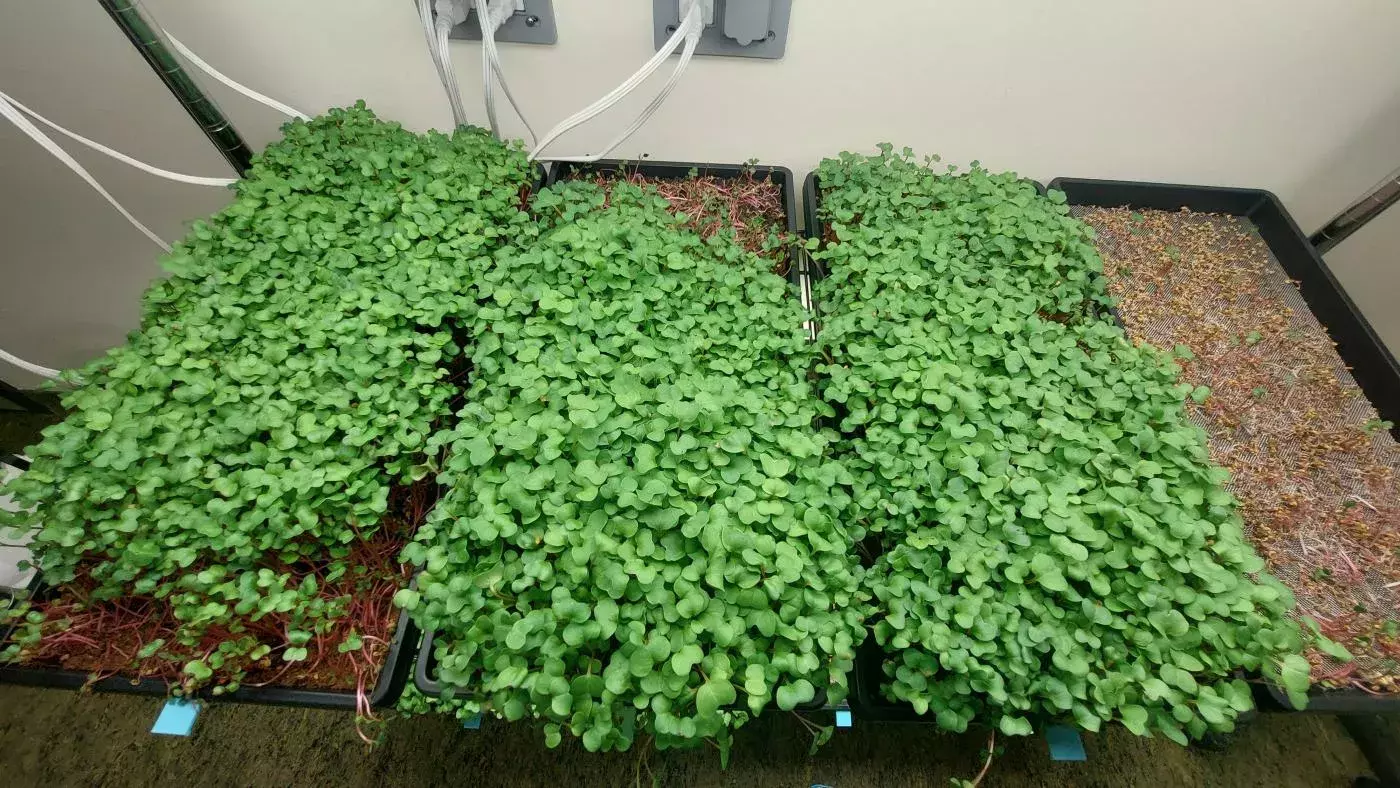

Radish microgreens performed best with compost substrate. Fertilizer didn't help.
Sustainable Agriculture Student Research Project
Growing Medium and Fertilizer Effects on MicrogreensManon Lee, Department of Sustainable Agriculture, 2023 |
|
Introduction
- Microgreens consist of a central stem, cotyledon, and the first pair of true leaves (Figure 1).
- Microgreens are used as nutritional supplements and for, visual, flavour and texture enhancement of food.
- Growing media are soilless substrates for plants.
- Growing media provide environmental consistency and hold water and nutrients, while reducing microbial populations.
- Some growers use fertilizer for microgreen production; others do not.
Image
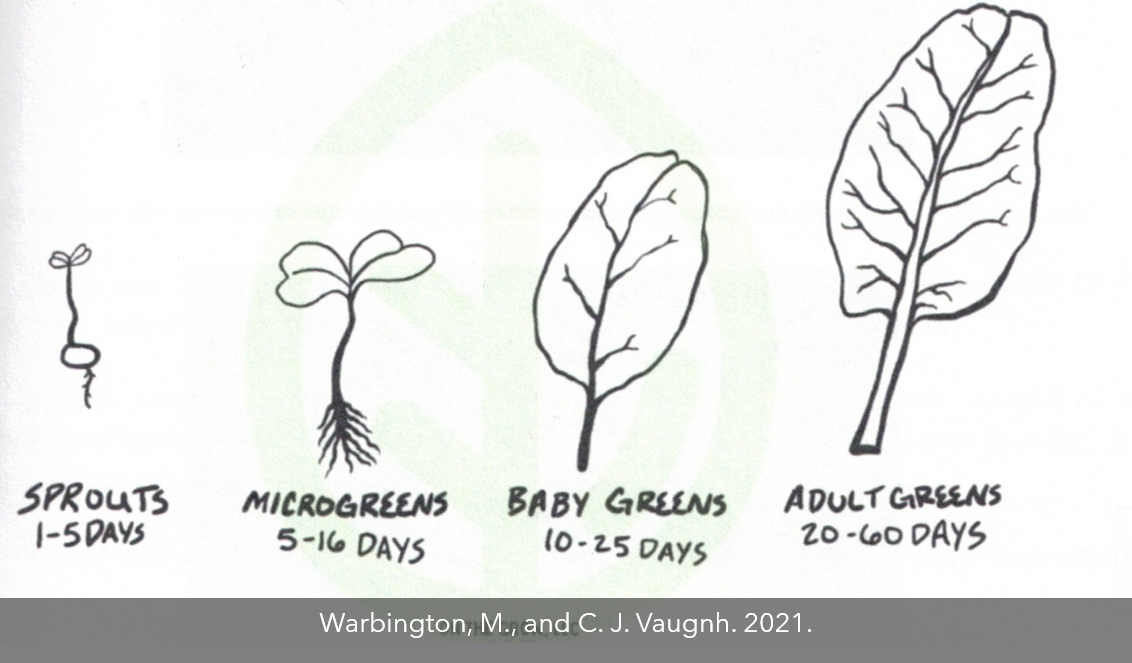
Objective
- Determine how fertilizer and media affect the growth of radish microgreens
Materials and Methods
- Completely Randomized factorial design (Figure 2)
- 2 factors ( growing medium and fertilizer)
- 6 treatments combinations
- 3 replicates
Image

- Growing medium factor levels (Figure 3)
- Steel Mesh (On the Grow, TX)
- Coconut Coir (Hydro Farm, Sri Lanka)
- Compost (Spent mushroom manure, Canadian Tire)
- Fertilizer factor levels
- Fish Fertilizer (2-3-0) with tap water
- Tap water only (Control)
- Study site: Climate-controlled room in the Institute for Sustainable Horticulture Lab on KPU's Langley campus (Figure 4)
Image
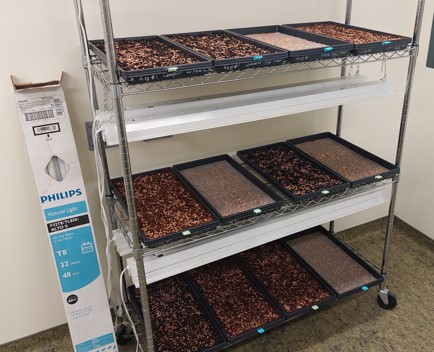
Image
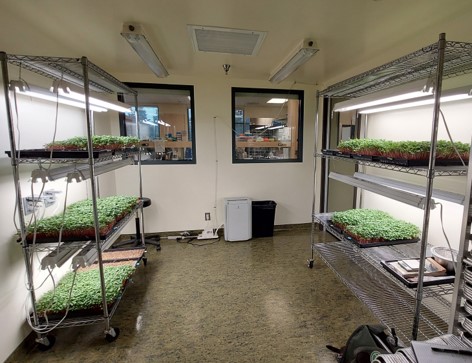
- Management Timeline
- Day 1: Seeded. Weights placed on top tray.
- Day 4: 24-hour blackout for plant elongation
- Day 9: Harvested
- Day 16: Dried and weighed
- Statistical Analysis
- Multi-factor ANOVA in jamovi interface for R
- Means separation by Tukey test
Results
- No significant effect of fertilizer (p = 0.24) (Figure 5).
Image

- Growing medium had a significant effect on radish growth (p < 0.001) (Figures 6, 7).
- Highest growth in compost
- Lowest growth in steel mesh
- Intermediate growth in coconut coir
Image
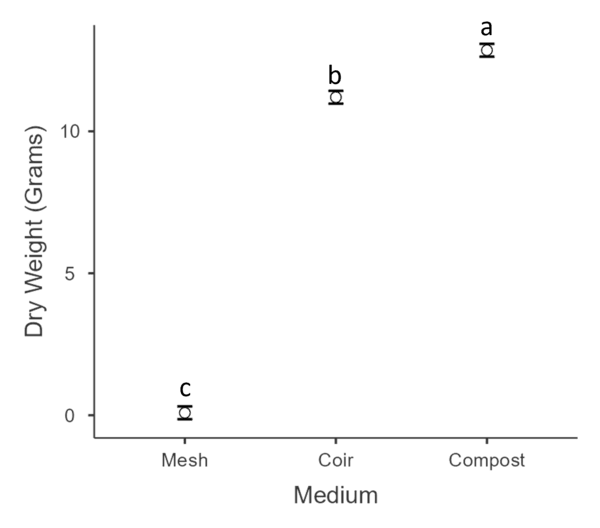
Image

- No significant interaction between growing medium and fertilizer (p = 0.41) (Figure 8)
- No evidence that fertilizer influences the effect of growing media
- No evidence that growing medium influences the effect of fertilizer
Image

Conclusion
- For the rate of application used, 9 day old radish not old enough to need fertilizer.
- Trays in the mesh studies were not heavy enough to reach the reservoirs of water in the tray below which likely resulted in them drying out and dying.
- Compost was the best growing medium followed by coco coir. Mesh performed very poorly.
Acknowledgements
Micheal Bomford and Sahar Zandieh for guidance and planning in carrying out of the experiment. Lisa Wegener and Deborah Henderson for the generous use of the Institute of Sustainable Horticulture Labs and assistance in executing the experiment.